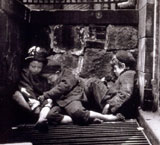The First Juvenile Court
The child-saving movement that began in the previous era culminates in an entirely separate system of "justice" for minors. The Illinois Juvenile Court Act of 1899 establishes the country's first juvenile or family court. Twenty-nine states will have a juvenile court statute by 1928.
Since the child-savers do not view their work as punitive or within the realm of criminal justice, it follows that these children do not belong in the criminal courts. Prison conditions are abominable and inappropriate for kids, and the era's renewed faith in rehabilitation is even more optimistic when it comes to young people. The mission is one of rescue and training. In accordance with this philosophical approach, the court act has an informal and liberal designčit states that "the care, custody and discipline of a child shall approximate as nearly as may be that which should be given by its parents." This newly created system is a civil court and therefore does not summon any of the due process requirements and rights associated with criminal law. Whether by purpose or providence, the child-savers develop an easier, more efficient way for the government to control youth. It will not be until 1967 that a Supreme Court ruling will ease this extraordinary level of dominion over juveniles.
 |
| Street Arabs Jacob Riis, c.1880 |